James G. Speight9780849390678, 0849390672
Like its bestselling predecessors, this volume traces the science of petroleum from its subterranean formation to the physicochemical properties and the production of numerous products and petrochemical intermediates. Presenting nearly 50 percent new material, this edition emphasizes novel refining approaches that optimize efficiency and throughput. It includes new chapters on heavy oil and tar sand bitumen recovery, deasphalting and dewaxing processes, and environmental aspects of refining, including refinery wastes, regulations, and analysis. The text also features revised and expanded coverage of instability and incompatibility, refinery distillation, thermal cracking, hydrotreating and desulfurization, hydrocracking, and hydrogen production.
A unique, well-documented, and forward-thinking work, this book continues to present the most complete coverage of petroleum science, technology, and refining available. The Chemistry and Technology of Petroleum, Fourth Edition provides an ideal platform for scientists, engineers, and other professionals to achieve cleaner and more efficient petroleum processing methods.
Table of contents :
9067_fm.pdf……Page 1
The Chemistry and Technology of Petroleum……Page 9
Preface to the Fourth Edition……Page 11
Preface to the First Edition……Page 13
Author……Page 15
Table of Contents……Page 17
Part I: History, Occurence, and Recovery……Page 35
Table of Contents……Page 0
1.1 Historical Perspectives……Page 37
1.2 Modern Perspectives……Page 44
1.3 Definitions and Terminology……Page 46
1.4.1 Petroleum……Page 48
1.4.3 Bitumen……Page 50
1.4.4 Wax……Page 51
1.4.6 Asphaltoid……Page 52
1.4.8 Kerogen……Page 53
1.4.9 Natural Gas……Page 54
1.5.3 Asphalt……Page 56
1.5.4 Tar and Pitch……Page 57
1.6.1 Asphaltenes, Carbenes, and Carboids……Page 58
1.6.2 Resins and Oils……Page 59
1.7 Oil Prices……Page 60
1.7.2 Oil Price History……Page 61
References……Page 62
2.1 Introduction……Page 65
2.2.1 Classification as a Hydrocarbon Resource……Page 67
2.2.2 Classification by Chemical Composition……Page 68
2.2.3 Correlation Index……Page 70
2.2.4 Density……Page 71
2.2.6 Viscosity……Page 72
2.2.8 Viscosity-Gravity Constant……Page 73
2.2.10 Recovery Method……Page 74
2.3 Miscellaneous Systems……Page 75
2.4.1 Identification and Quantification……Page 77
2.4.2 Future……Page 78
References……Page 79
3.1 Introduction……Page 81
3.2.1 Abiogenic Origin……Page 82
3.2.2 Biogenic Origin……Page 84
3.2.2.2 Establishment of Source Beds……Page 86
3.2.2.3 Nature of the Source Material……Page 88
3.2.2.4 Transformation of Organic Matter into Petroleum……Page 91
3.2.2.5 Accumulation in Reservoir Sediments……Page 92
3.2.2.6.1 Thermal Alteration……Page 97
3.2.2.6.2 Deasphalting……Page 99
3.2.3 Differences between the Abiogenic Theory and the Biogenic Theory……Page 100
3.2.4 Relationship of Petroleum Composition and Properties……Page 101
3.3 Occurrence……Page 103
3.3.1 Reserves……Page 104
3.3.2 Conventional Petroleum……Page 107
3.3.3 Natural Gas……Page 108
3.3.5 Bitumen (Extra Heavy Oil)……Page 110
References……Page 113
4.2 Properties……Page 117
4.4 Classification……Page 121
4.5 Isolation……Page 122
4.6.1 Ultimate (Elemental) Analysis……Page 123
4.6.3 Oxidation……Page 124
4.6.4 Thermal Methods……Page 125
4.7 Structural Models……Page 126
4.8 Kerogen Maturation……Page 128
References……Page 130
5.1 Introduction……Page 133
5.2 Exploration……Page 134
5.2.1 Gravity Methods……Page 135
5.2.2 Magnetic Methods……Page 136
5.2.3 Seismic Methods……Page 137
5.2.5 Electromagnetic Methods……Page 138
5.2.7 Borehole Logging……Page 139
5.3.1 Preparing to Drill……Page 140
5.3.2 Drilling Rig……Page 141
5.3.4 Drilling……Page 143
5.4 Well Completion……Page 144
5.5 Recovery……Page 145
5.5.1 Primary Recovery (Natural Methods)……Page 148
5.5.2 Secondary Recovery……Page 151
5.5.3 Enhanced Oil Recovery……Page 153
5.6 Products and Product Quality……Page 167
5.7 Transportation……Page 169
References……Page 174
6.1 Introduction……Page 177
6.2.1 Tar Sand Mining……Page 184
6.2.2 Hot-Water Process……Page 186
6.2.3 Other Processes……Page 189
6.3 Nonmining Methods……Page 191
6.3.1 Steam-Based Processes……Page 193
6.3.2 Combustion Processes……Page 194
6.3.3 Other Processes……Page 197
References……Page 207
Part II: Composition and Properties……Page 209
7.1 Introduction……Page 211
7.2 Ultimate (Elemental) Composition……Page 212
7.3 Chemical Components……Page 213
7.3.1 Hydrocarbon Constituents……Page 215
7.3.1.1 Paraffin Hydrocarbons……Page 216
7.3.1.2 Cycloparaffin Hydrocarbons (Naphthenes)……Page 218
7.3.1.3 Aromatic Hydrocarbons……Page 219
7.3.2 Nonhydrocarbon Constituents……Page 221
7.3.2.1 Sulfur Compounds……Page 222
7.3.2.3 Nitrogen Compounds……Page 224
7.3.2.4 Metallic Constituents……Page 226
7.3.2.5 Porphyrins……Page 227
7.4 Chemical Composition by Distillation……Page 229
7.4.1 Gases and Naphtha……Page 231
7.4.2 Middle Distillates……Page 232
7.4.3 Vacuum Residua (1050°F+)……Page 234
References……Page 235
8.1 Introduction……Page 239
8.2 Distillation……Page 241
8.2.1 Atmospheric Pressure……Page 244
8.2.2 Reduced Pressures……Page 245
8.2.3 Azeotropic and Extractive Distillation……Page 247
8.3 Solvent Treatment……Page 248
8.3.1.1 Influence of Solvent Type……Page 250
8.3.1.3 Influence of Temperature……Page 253
8.3.2 Fractionation……Page 254
8.4.1 Chemical Factors……Page 256
8.4.2.1 General Methods……Page 257
8.4.2.2 ASTM Methods……Page 261
8.5.1 Acid Treatment……Page 263
8.5.2.1 Urea Adduction……Page 265
8.5.2.3 Adduct Composition……Page 266
8.5.2.4 Adduct Structure……Page 267
8.5.2.5 Adduct Properties……Page 268
8.6 Use of the Data……Page 269
References……Page 271
9.1 Introduction……Page 273
9.2 Petroleum Assay……Page 274
9.3.1 Elemental (Ultimate) Analysis……Page 277
9.3.2 Density and Specific Gravity……Page 278
9.3.3 Viscosity……Page 280
9.3.4 Surface and Interfacial Tension……Page 283
9.3.5 Metals Content……Page 285
9.4.1 Volatility……Page 286
9.4.2 Liquefaction and Solidification……Page 289
9.4.3 Carbon Residue……Page 291
9.4.4 Aniline Point……Page 292
9.4.8 Thermal Conductivity……Page 293
9.4.11 Critical Properties……Page 294
9.5.3 Dielectric Strength……Page 295
9.5.5 Static Electrification……Page 296
9.6.1 Refractive Index……Page 297
9.7 Spectroscopic Methods……Page 298
9.7.2 Nuclear Magnetic Resonance……Page 299
9.8.1 Gas Chromatography……Page 300
9.8.2 Simulated Distillation……Page 303
9.8.3 Adsorption Chromatography……Page 304
9.8.4 Gel Permeation Chromatography……Page 305
9.8.5 Ion-Exchange Chromatography……Page 307
9.8.6 High-Performance Liquid Chromatography……Page 308
9.9 Molecular Weight……Page 309
9.10 Use of the Data……Page 310
References……Page 311
10.1 Introduction……Page 315
10.2 Methods for Structural Group Analysis……Page 317
10.2.1.1 Direct Method……Page 320
10.2.1.2 Waterman Ring Analysis……Page 322
10.2.1.4 n.d.M. Method……Page 323
10.2.1.6 Density-Temperature Coefficient Method……Page 324
10.2.1.7 Molecular Weight-Refractive Index Method……Page 325
10.2.1.8 Miscellaneous Methods……Page 326
10.2.2 Spectroscopic Methods……Page 327
10.2.2.1 Infrared Spectroscopy……Page 328
10.2.2.2 Nuclear Magnetic Resonance Spectroscopy……Page 331
10.2.2.3 Mass Spectrometry……Page 335
10.2.2.4 Electron Spin Resonance……Page 337
10.2.2.5 Ultraviolet Spectroscopy……Page 338
10.2.2.6 X-Ray Diffraction……Page 339
10.2.3.1 Nitrogen……Page 341
10.2.3.3 Sulfur……Page 342
10.3 Miscellaneous Methods……Page 343
References……Page 344
11.1 Introduction……Page 349
11.2 Separation……Page 350
11.3 Composition……Page 353
11.4 Molecular Weight……Page 358
11.5 Reactions……Page 362
11.6 Solubility Parameter……Page 367
11.7 Structural Aspects……Page 369
References……Page 375
12.1 Introduction……Page 379
12.2.1 Volatile Fractions……Page 380
12.2.2.2 Resins (Structure)……Page 381
12.2.3.2 Structure……Page 383
12.3 Chemical and physical structure of Petroleum……Page 384
12.4 Stability or Instability of the Crude Oil System……Page 389
12.5 Effects on Recovery and Refining……Page 398
12.5.1 Effects on Recovery Operations……Page 399
12.5.2 Effects on Refining Operations……Page 402
References……Page 404
13.1 Introduction……Page 407
13.2 Instability and Incompatibility in petroleum……Page 411
13.3.1 Elemental Analysis……Page 412
13.3.3 Volatility……Page 413
13.3.5 Asphaltene Content……Page 414
13.3.6 Pour Point……Page 415
13.3.8 Metals (Ash) Content……Page 416
13.4 Methods for Determining Instability and Incompatibility……Page 417
13.5 Effect of Asphaltene Constituents……Page 422
References……Page 425
Part III: Refining……Page 427
14.1 Introduction……Page 429
14.2 Dewatering and Desalting……Page 432
14.3 Early Processes……Page 433
14.4 Distillation……Page 434
14.4.1 Historical Development……Page 435
14.4.2.1 Atmospheric Distillation……Page 436
14.4.2.2 Vacuum Distillation……Page 437
14.5.1 Historical Development……Page 439
14.5.2.2 Visbreaking……Page 442
14.5.2.3 Coking……Page 443
14.6.1 Historical Development……Page 445
14.6.2 Modern Processes……Page 447
14.6.3 Catalysts……Page 448
14.7.2 Modern Processes……Page 449
14.8.1 Historical Development……Page 452
14.8.2.2 Catalytic Reforming……Page 453
14.8.2.3 Catalysts……Page 454
14.9.2 Modern Processes……Page 455
14.9.3 Catalysts……Page 456
14.10.2 Modern Processes……Page 457
14.11.2 Modern Processes……Page 458
14.12.1 Deasphalting……Page 459
14.12.2 Dewaxing……Page 460
14.13 Refining Heavy Feedstocks……Page 461
14.14 Petroleum Products……Page 465
14.15 Petrochemicals……Page 467
References……Page 468
15.1 Introduction……Page 471
15.2.1 Thermal Cracking……Page 473
15.2.2 Catalytic Cracking……Page 474
15.3 Hydrogenation……Page 477
15.3.2 Hydrotreating……Page 478
15.4 Isomerization……Page 479
15.6 Polymerization……Page 480
15.7.1 Thermal Chemistry……Page 481
15.7.2 Hydroconversion Chemistry……Page 490
15.7.3.1 Visbreaking……Page 491
15.7.3.2 Hydroprocessing……Page 494
References……Page 496
16.1 Introduction……Page 499
16.2 Pretreatment……Page 501
16.3 Atmospheric and Vacuum Distillation……Page 502
16.3.1 Atmospheric Distillation……Page 504
16.3.2 Vacuum Distillation……Page 507
16.4.1 Columns……Page 509
16.4.3 Trays……Page 511
16.5.1 Stripping……Page 512
16.5.3 Stabilization and Light End Removal……Page 513
16.5.4 Superfractionation……Page 514
16.5.5 Azeotropic Distillation……Page 515
16.5.6 Extractive Distillation……Page 517
16.5.7 Process Options for Heavy Feedstocks……Page 518
References……Page 519
17.1 Introduction……Page 521
17.2 Early Processes……Page 526
17.3 Commercial Processes……Page 527
17.3.1 Visbreaking……Page 528
17.3.2 Coking Processes……Page 533
17.3.2.1 Delayed Coking……Page 534
17.3.2.2 Fluid Coking……Page 537
17.3.2.3 Flexicoking……Page 539
17.3.3.2 Asphalt Coking Technology (ASCOT) Process……Page 541
17.3.3.3 Comprehensive Heavy Ends Reforming Refinery (Cherry-P) Process……Page 542
17.3.3.4 Decarbonizing……Page 543
17.3.3.6 Eureka Process……Page 544
17.3.3.7 Fluid Thermal Cracking (FTC) Process……Page 545
17.3.3.8 High Conversion Soaker Cracking (HSC) Process……Page 546
17.3.3.12 Shell Thermal Cracking……Page 549
17.3.3.13 Tervahl T Process……Page 551
References……Page 552
18.1 Introduction……Page 555
18.3 Commercial Processes……Page 559
18.3.2.1 Fluid-Bed Catalytic Cracking……Page 560
18.3.2.5 Universal Oil Products (UOP) Fluid-Bed Catalytic Cracking……Page 562
18.3.3.4 Suspensoid Catalytic Cracking……Page 563
18.3.4.1 Asphalt Residual Treating (ART) Process……Page 564
18.3.4.2 Residue Fluid Catalytic Cracking (HOC) Process……Page 565
18.3.4.3 Heavy Oil Treating (HOT) Process……Page 566
18.3.4.5 Reduced Crude Oil Conversion (RCC) Process……Page 567
18.3.4.6 Shell FCC Process……Page 568
18.3.4.7 S&W Fluid Catalytic Cracking Process……Page 570
18.4 Catalysts……Page 571
18.5 Process Parameters……Page 572
18.5.1 Reactor……Page 573
18.5.2 Coking……Page 574
18.5.3 Catalyst Variables……Page 576
18.5.4 Process Variables……Page 577
References……Page 578
19.2 Commercial Processes……Page 581
19.2.1 Deasphalting Process……Page 582
19.2.2 Process Options for Heavy Feedstocks……Page 588
19.2.2.1 Deep Solvent Deasphalting Process……Page 589
19.2.2.2 Demex Process……Page 592
19.2.2.3 MDS Process……Page 593
19.2.2.4 Residuum Oil Supercritical Extraction (ROSE) Process……Page 594
19.2.2.6 Lube Deasphalting……Page 595
19.3 Dewaxing Processes……Page 596
References……Page 601
20.1 Introduction……Page 603
20.2 Process Parameters and Reactors……Page 611
20.2.4 Catalyst Life……Page 612
20.2.5 Feedstock Effects……Page 613
20.2.6.1 Downflow Fixed-Bed Reactor……Page 615
20.2.6.2 Upflow Expanded-Bed Reactor……Page 616
20.3 Commercial Processes……Page 617
20.3.3 Gulf-HDS……Page 618
20.3.4 Hydrofining……Page 619
20.3.9 Process Options for Heavy Feedstocks……Page 621
20.3.9.1 Residuum Desulfurization and Vacuum Residuum Desulfurization Process……Page 622
20.3.9.2 Residfining Process……Page 623
20.4 Catalysts……Page 624
20.5 Biodesulfurization……Page 628
20.6 Gasoline and Diesel Fuel Polishing……Page 629
References……Page 631
21.1 Introduction……Page 633
21.2 Commercial Processes……Page 639
21.2.1.1 Single-Stage and Two-Stage Options……Page 640
21.2.2.2 CANMET Hydrocracking Process……Page 644
21.2.2.3 H-Oil Process……Page 646
21.2.2.5 Hyvahl F Process……Page 648
21.2.2.6 IFP Hydrocracking Process……Page 649
21.2.2.7 Isocracking Process……Page 650
21.2.2.8 LC-Fining Process……Page 651
21.2.2.10 Microcat-RC Process……Page 653
21.2.2.11 Mild Hydrocracking Process……Page 655
21.2.2.12 MRH Process……Page 656
21.2.2.14 Residfining Process……Page 657
21.2.2.16 Tervahl-H Process……Page 658
21.2.2.17 Unicracking Process……Page 659
21.2.2.18 Veba Combi Cracking Process……Page 661
21.3 Catalysts……Page 662
References……Page 669
22.1 Introduction……Page 671
22.2.1 Hydrotreating……Page 674
22.2.2 Hydrocracking……Page 675
22.3 Feedstocks……Page 676
22.4 Process Chemistry……Page 677
22.5 Commercial Processes……Page 679
22.5.1 Heavy Residue Gasification and Combined Cycle Power Generation……Page 680
22.5.4 Hypro Process……Page 681
22.5.5 Pyrolysis Processes……Page 682
22.5.7 Steam-Methane Reforming……Page 683
22.5.9 Synthesis Gas Generation……Page 685
22.5.10 Texaco Gasification (Partial Oxidation) Process……Page 686
22.6.1 Reforming Catalysts……Page 687
22.6.2 Shift Conversion Catalysts……Page 688
22.7 Hydrogen Purification……Page 689
22.7.2 Pressure-Swing Adsorption Units……Page 690
22.8 Hydrogen Management……Page 692
References……Page 693
23.1 Introduction……Page 695
23.2 Reforming……Page 696
23.2.1 Thermal Reforming……Page 698
23.2.2 Catalytic Reforming……Page 699
23.2.2.1.1 Hydroforming……Page 702
23.2.2.1.3 Platforming……Page 703
23.2.2.1.6 Selectoforming……Page 705
23.2.2.3 Fluid-Bed Processes……Page 706
23.3 Isomerization……Page 707
23.3.2 Butomerate Process……Page 709
23.3.7 Penex Process……Page 710
23.4 Alkylation……Page 711
23.4.1 Cascade Sulfuric Acid Alkylation……Page 712
23.4.2 Hydrogen Fluoride Alkylation……Page 713
23.5.1 Thermal Polymerization……Page 714
23.5.3 Bulk Acid Polymerization……Page 715
23.6.1 Reforming Processes……Page 716
23.6.4 Polymerization Processes……Page 717
References……Page 718
24.1 Introduction……Page 719
24.2.1 Caustic Processes……Page 722
24.2.1.5 Lye Treatment……Page 723
24.2.1.8 Sodasol Process……Page 724
24.2.2 Acid Processes……Page 725
24.2.2.2 Sulfuric Acid Treatment……Page 727
24.2.3.3 Bauxite Treatment……Page 728
24.2.3.8 Thermofor Continuous Percolation Process……Page 729
24.2.4.2 Copper Sweetening Process……Page 730
24.2.4.4 Hypochlorite Sweetening Process……Page 731
24.2.5 Solvent Processes……Page 732
24.2.5.1 Deasphalting……Page 733
24.2.5.2 Solvent Refining……Page 734
24.2.5.3 Dewaxing……Page 737
References……Page 740
25.1 Introduction……Page 741
25.1.1 Gas Streams from Crude Oil……Page 742
25.1.2 Gas Streams from Natural Gas……Page 745
25.2 Gas Cleaning……Page 746
25.3 Water Removal……Page 753
25.3.2 Solid Adsorbents……Page 754
25.3.3 Use of Membranes……Page 755
25.4.1 Extraction……Page 756
25.4.3 Fractionation of Natural Gas Liquids……Page 757
25.6 Acid Gas Removal……Page 758
25.8 Fractionation……Page 762
25.9 Claus Process……Page 763
References……Page 765
26.1 Introduction……Page 767
26.2.1 Composition……Page 772
26.2.3 Properties and Uses……Page 773
26.3.1 Composition……Page 776
26.3.2 Manufacture……Page 777
26.3.4 Octane Numbers……Page 780
26.3.5 Additives……Page 782
26.4.1 Composition……Page 784
26.4.2 Manufacture……Page 785
26.4.3 Properties and Uses……Page 787
26.5 Kerosene……Page 788
26.5.2 Manufacture……Page 789
26.6 Fuel Oil……Page 790
26.7 Lubricating Oil……Page 792
26.7.2 Manufacture……Page 793
26.7.2.3 Solvent Refining Processes……Page 794
26.7.2.6 Finishing Processes……Page 795
26.7.2.7 Older Processes……Page 796
26.7.3 Properties and Uses……Page 797
26.8.1 White Oil……Page 798
26.8.2 Insulating Oil……Page 799
26.9 Grease……Page 800
26.9.1 Lime Soap……Page 801
26.9.5 Cold Sett Grease……Page 802
26.10.2 Manufacture……Page 803
26.11.1 Composition……Page 805
26.11.2 Manufacture……Page 806
26.12 Coke……Page 808
26.13 Sulfonic Acids……Page 810
26.15 Product Blending……Page 811
References……Page 812
27.1 Introduction……Page 815
27.2.1 Halogenation……Page 823
27.2.2 Nitration……Page 824
27.2.3 Oxidation……Page 825
27.2.4 Alkylation……Page 826
27.3 Chemicals from Olefins……Page 827
27.3.1 Hydroxylation……Page 828
27.3.3 Polymerization……Page 830
27.4 Chemicals from Aromatics……Page 831
27.6 Chemicals from Natural Gas……Page 833
27.7 Inorganic Petrochemicals……Page 835
27.8 Synthesis Gas……Page 836
References……Page 837
Part IV: Environmental Issues……Page 839
28.1 Introduction……Page 841
28.2 Definitions……Page 843
28.3 Environmental Regulations……Page 845
28.3.3 Safe Drinking Water Act……Page 846
28.3.5 Toxic Substances Control Act……Page 847
28.3.8 Oil Pollution Act……Page 848
28.4 Process Analysis……Page 849
28.4.1 Gaseous Emissions……Page 852
28.4.2 Liquid Effluents……Page 856
28.4.3 Solid Effluents……Page 857
References……Page 858
29.1 Introduction……Page 861
29.2 Process Wastes……Page 864
29.2.1 Desalting……Page 865
29.2.2 Distillation……Page 866
29.2.3 Thermal Cracking and Visbreaking……Page 869
29.2.4 Coking Processes……Page 870
29.2.5 Fluid Catalytic Cracking……Page 872
29.2.6 Hydrocracking and Hydrotreating……Page 873
29.2.7 Catalytic Reforming……Page 876
29.2.8 Alkylation……Page 877
29.2.9 Isomerization……Page 879
29.2.10 Polymerization……Page 880
29.2.11 Deasphalting……Page 881
29.2.12 Dewaxing……Page 882
29.2.13 Gas Processing……Page 883
29.3 Types of Waste……Page 884
29.3.1 Gases and Lower Boiling Constituents……Page 886
29.3.2 Higher Boiling Constituents……Page 888
29.3.3 Wastewater……Page 889
29.4 Waste Toxicity……Page 891
29.5.3 Requirements……Page 892
29.6 Management of Refinery Waste……Page 893
References……Page 894
30.1 Introduction……Page 895
30.2 Petroleum and Petroleum Products……Page 896
30.4 Total Petroleum Hydrocarbons……Page 898
30.4.1 Gas Chromatographic Methods……Page 900
30.4.2 Infrared Spectroscopy Methods……Page 903
30.4.3 Gravimetric Methods……Page 904
30.4.4 Immunoassay Methods……Page 905
30.5 Petroleum Group Analysis……Page 906
30.5.2 Immunoassay……Page 907
30.5.3 Gas Chromatography……Page 908
30.5.4 High-Performance Liquid Chromatography……Page 909
30.5.5 Gas Chromatography-Mass Spectrometry……Page 910
30.7 Assessment of the Methods……Page 911
References……Page 914
SI Metric Conversion Factors (E = Exponent; I.E. E + 03 = 103)……Page 917
Glossary……Page 919

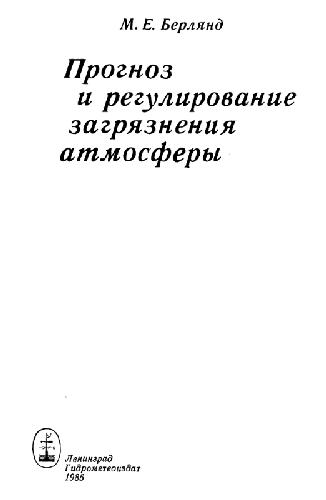
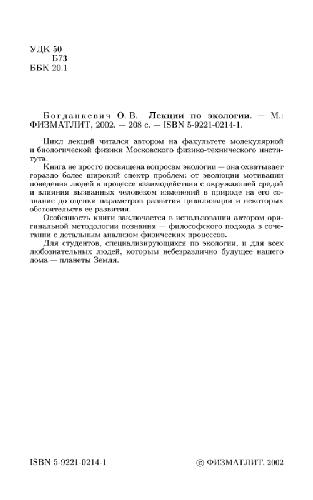

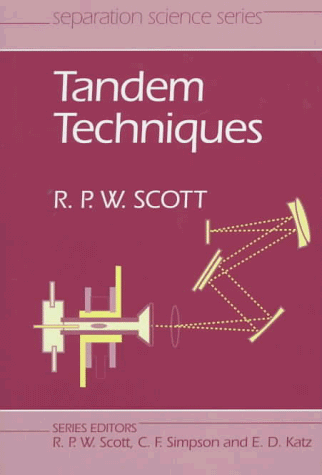
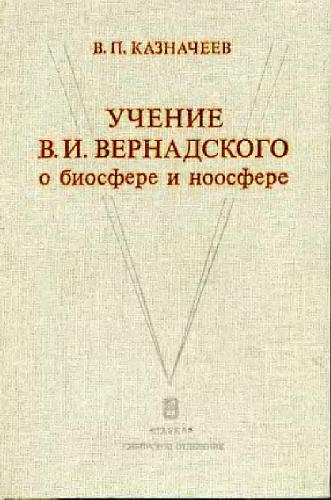
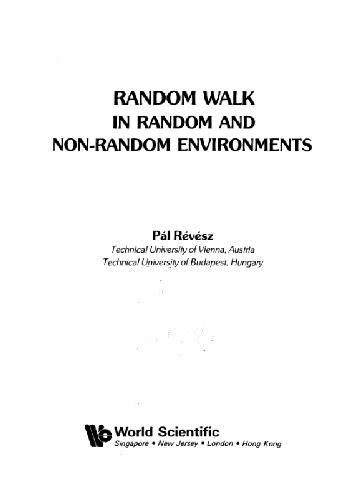
Reviews
There are no reviews yet.